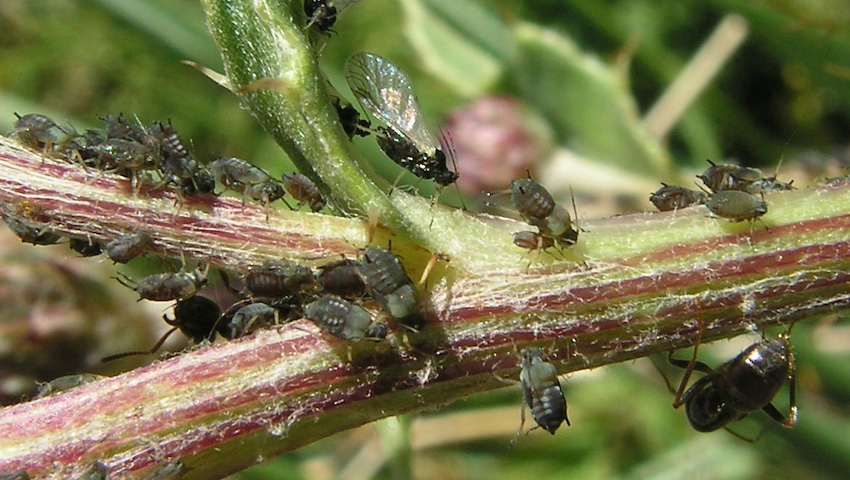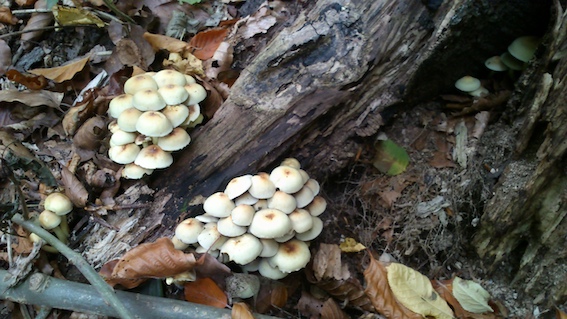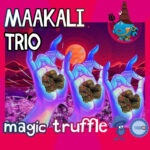Or are they?
In a recent UK study, scientists found that plants in the wild are connected by their roots via networks of fungi. These complex webs, called mycorrhizae, can run for miles underground — allowing plants to talk to each other in a virtual “plant Internet”. Here’s a discovery that may change the way you see the world forever!
“Plant Internet”

Mycorrhizae is a type of fungus that sticks to the roots of plants (In Greek, mykos means fungus and riza means root). By growing out silky “branches” to the roots of other plants, the fungus forms a complex web. This can span dozens of meters on average. And if you look upon one closely, it kinda looks like a cobweb — as mycelium often does. A familiar sight for sure, if you grow your own magic mushrooms.
So how exactly can plants talk via these root fungi? Researchers from the University of Aberdeen created a test to figure out just that! In a classic experiment, they grew two sets of broad bean plants. One set was allowed to grow nets of fungi. The other set was not. Stems, branches, and leaves were also covered with bags to prevent any chemical signals (which can spread out via air).
The scientists then released aphids (vicious sap-sucking insects) onto some of the plants, to see if they could “warn” the others in time.
Early Warning System

Did you know that bean plants, when threatened, can spray out chemicals? These “anti-aphid” toxins also attract wasps, the pests’ natural predators. As a defense, it only works if the aphid-infested plants can warn the others in time — and this is where the fungi network steps in.
The first set of bean plants (which had fungi networks) were able to prepare for the coming aphids. The second set (which had zero fungi networks) had no idea the pests were coming. They had no early warning system… so their beans were chomped.
Wood Wide Web
The incredible power of fungi networks go beyond bean plants. Believe it or not, mycorrhizal fungi connect 90% of all land plants! Older trees send sugars to “baby trees”… Dying trees can pass on leftover nutrients for others to use… And of course, early warnings are sent to the rest of the forest (in case of insect plagues). All thanks to fungi networks!
“The relationship between these mycorrhizal fungi and the plants they connect is now known to be ancient (around four hundred and fifty million years old)… a symbiosis in which both organisms benefit from [each other].” — from the New Yorker
The fungi absorb food from trees, such as the carb-rich sugar they make from sunlight. Using special enzymes which trees don’t have, the fungi takes phosphorus, nitrogen, and iron from the soil — and shares them with their leafy hosts. How so? Turns out, fungi networks can absorb nutrients and water better than plant roots themselves! Amazing, isn’t it?
Nature’s Recycling

Fungi play a huge role as decomposers in most land ecosystems. By feeding on decaying wood, fungi give back nutrients to the soil. This “waste” serves as food for plants — making the topsoil rich and fertile in the process. Mushrooms can also clean up petroleum waste from nasty oil spills, and even break down toxic chlorine! In the words of mycologist Paul Stamets, mushrooms are nature’s recycling system:
“Fungi are the grand recyclers of the planet and the vanguard species in habitat restoration.
“From dead plant matter to nematodes to bacteria, never underestimate the cleverness of mushrooms to find new food!”
It’s very tricky to spot fungi networks these days. For these to survive, the soil must not be ruffled. Human activity, such as tillage and cultivation, can destroy mycorrhizae. (Ever wonder why crops in urban farms don’t grow fungi networks? Now you know!)
Underground Magic
“The revelation of the Wood Wide Web’s existence, and the increased understanding of its functions, raises big questions—about where species begin and end; about whether a forest might be better imagined as a single superorganism…and about what trading, sharing, or even friendship might mean among plants.”
Fantastic fungi are everywhere. But beyond trippy delights such as magic mushrooms and truffles, there is another deep magic at play. The secret kind — woven by threads of mycelium — that only plants and fungi can ever truly experience. Sure, there’s still a lot of mystery to solve in mycorrhizal fungi. But one thing’s for sure… Underground fungi networks are key to the robust growth of plants!





